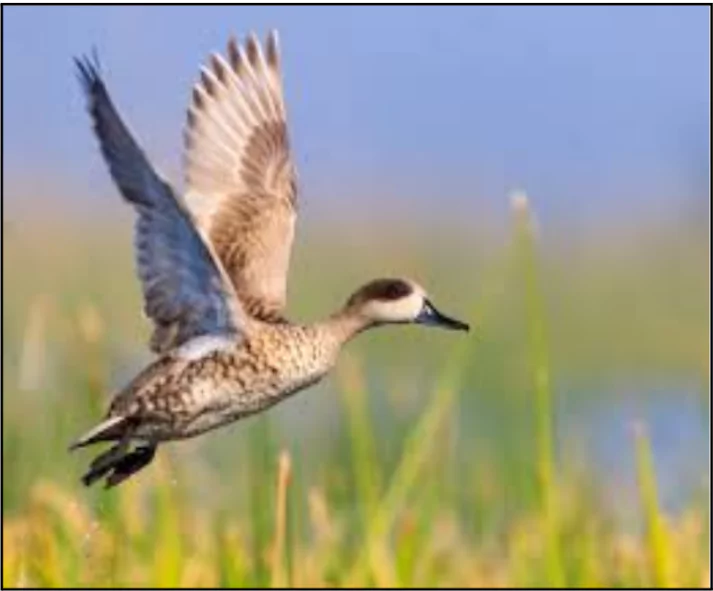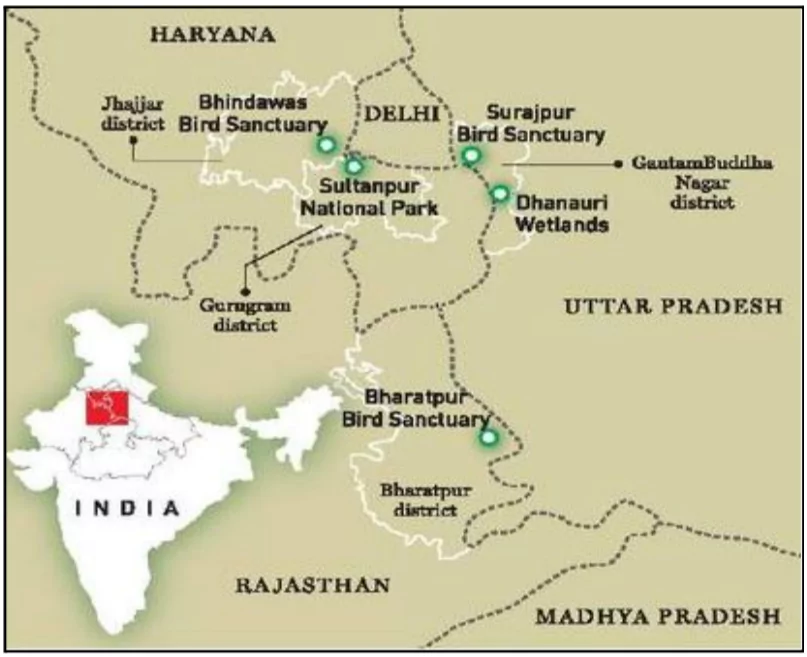A marbled duck, an uncommon winter migrant last seen at Sultanpur National Park in 1990, was recently spotted by bird enthusiasts, marking a significant sighting for the region.
About Marbled Duck

- The marbled duck is also commonly referred to as the marbled teal.
- Characteristics: This species is a small duck characterized by a black bill and gray-brown plumage with distinctive spotting.
- Distribution: The marbled duck is native to the central and southwestern Palearctic region, with a range extending from Central Asia to northwest Africa and the Iberian Peninsula.
- Migratory Patterns: Ducks from colder regions migrate south during winter to warmer areas such as North Africa and the Indian subcontinent.
- Habitat: The marbled duck prefers temporary or semi-permanent wetlands, particularly those with shallow water areas.
- It thrives in brackish wetlands with well-structured vegetation.
- The species is adaptable and can inhabit both natural and artificial wetlands.
- Social Nature: The marbled duck is gregarious, non-territorial, and generally non-aggressive.
- Mating Patterns: Monogamous pairs form annually during the autumn season.
- Conservation Status: The marbled duck is classified as “Near Threatened” on the IUCN Red List.
Enroll now for UPSC Online Course

About Sultanpur National Park
- Location: Sultanpur village, Gurugram district, Haryana
- Status: Recognised as a Ramsar site.
- Significance: A birdwatcher’s paradise, known for its diverse avian species.
- Key Features:
- A man-made lake attracts a variety of resident and migratory birds.
- Conservation Efforts: The park is managed by the Haryana Forest Department.
![]() 11 Dec 2024
11 Dec 2024



